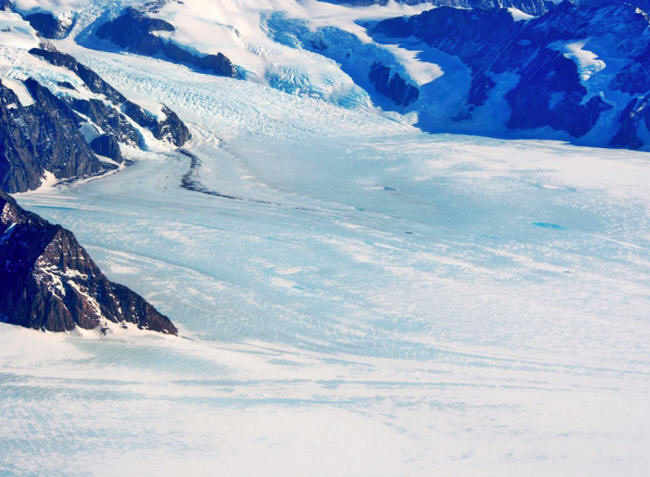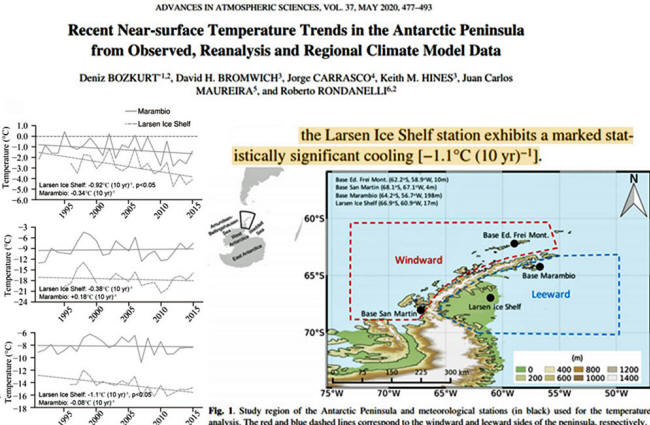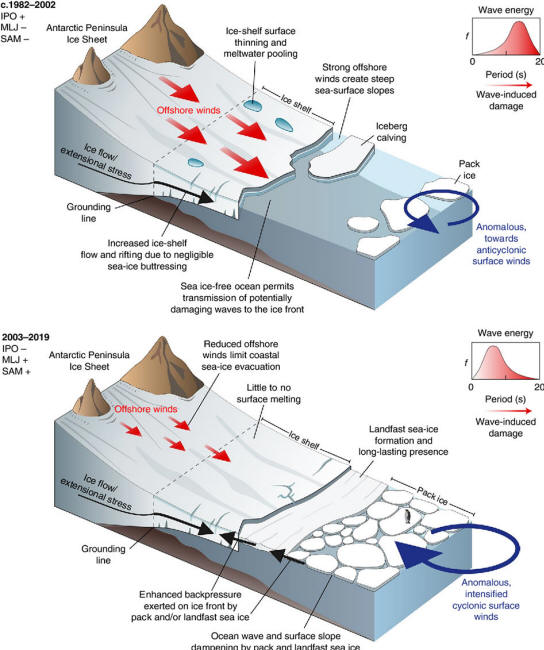|
also HERE... Ice Shelves Advance, Media Silent...
It is claimed that anthropogenic CO2 emissions from burning fossil fuels are responsible for amplifying warming ("polar amplification") and ice melt in polar climates, consistent with pronouncements pertaining to anthropogenic global warming.
However, Antarctica's Larsen Ice Shelf station indicates a massive cooling trend, -1.1°C per decade, has been ongoing since the late 1990s (Bozkurt et al., 2020).
Image Source:
About 85% of the East Antarctic Peninsula ice sheet has sustained "uninterrupted advance" since 2003 (Christie et al., 2022).
Schematic diagrams showing the key atmospheric and sea ice processes controlling the (in)stability of the eastern Antarctic Peninsula's ice shelves through time. The signs following IPO, MLJ and SAM refer to the states of the Interdecadal Pacific Oscillation, Mid-Latitude Jet and Southern Annular Mode relative to each epoch, respectively (cf. Supplementary Discussion 3). Histograms indicate the probability of ocean wave-induced ice-shelf frontal damage. Note that, unlike the EAP's other ice shelves, Ronne Ice Shelf is immune to the influence of damaging ocean waves given its thickness
East and West Antarctica have been significantly cooling since 1979.
Overall cooling rates of -0.7°C and -0.42°C per decade from 1979 to 2018 indicate -2.8°C and -1.68°C total cooling, respectively, for the mainland continent during these decades (Zhu et al., 2021).
The Antarctic Peninsula only began significant cooling in the 1990s (Oliva et al., 2017), and thus the 21st-century cooling has not yet overtaken or reversed the overall trend since 1979.
|




